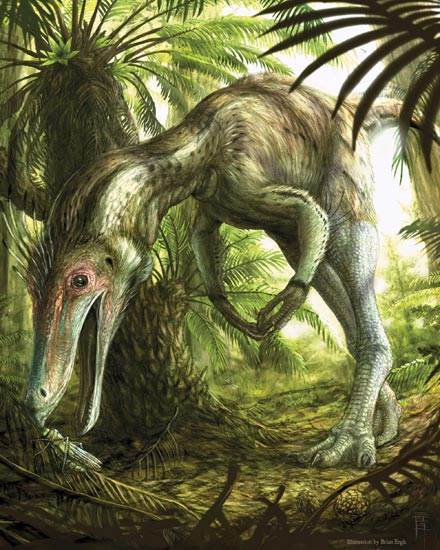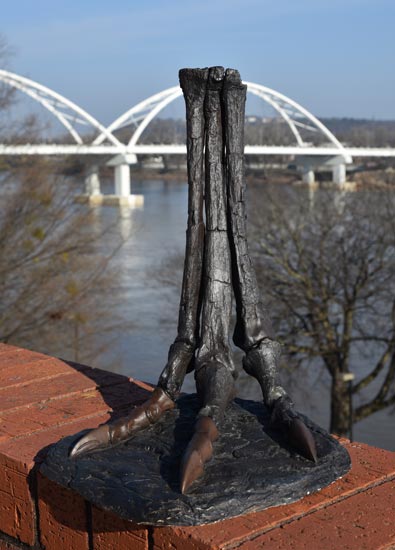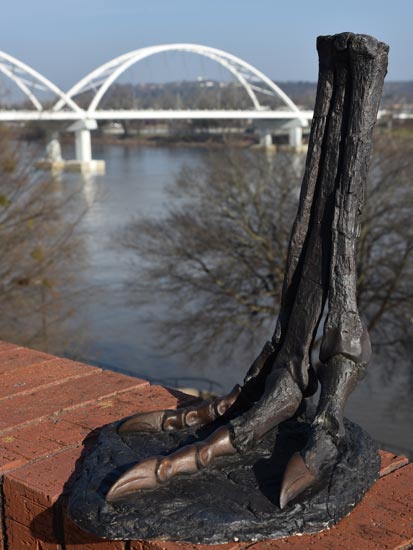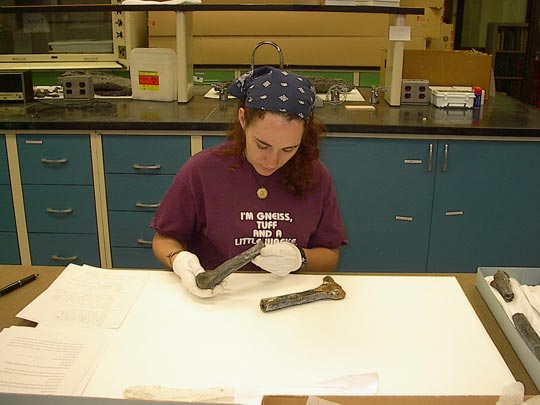Updating Arkansaurus after New Research is Published
Updating Arkansaurus fridayi
A few days ago, Everything Dinosaur published an article about the newly described basal ornithomimosaur called Arkansaurus fridayi. Although the fossil bones were found nearly fifty years ago, the scientific paper describing the fossils and officially naming this dinosaur has only just been published (Journal of Vertebrate Palaeontology). Lead author of the paper, ReBecca Hunt-Foster of the Bureau of Land Management, emailed us so that we could post up more images of this significant fossil discovery.
A Life Restoration of the Basal Ornithomimosaur Arkansaurus fridayi

Picture credit: Brian Engh
To read Everything Dinosaur’s earlier article on the formal description of Arkansaurus: “Arkansas Reptile” – A Rare Insight into Appalachian Dinosaurs.
More Primitive Than Asian Ornithomimosaurs That Lived at the Same Time
Ornithomimosaurs (the ostrich-mimic dinosaurs) are quite well known from the Early Cretaceous of Asia, however, very little is known about North American ornithomimosaurs from this time in Earth’s history, hence the importance of the Arkansaurus fossils. The dinosaur has been named from a single, partial right foot, recovered from the Lower Cretaceous (Albian to Aptian faunal stages) of the Trinity Group of Arkansas.
A Cast of the Fossil Foot Bones (Anterior View)

Picture credit: R. Hunt-Foster
Studying Arkansaurus fridayi
Contemporaneous with the likes of Beishanlong (B. grandis) from Gansu Province (north-west China), living around 113 million years ago, Arkansaurus fridayi can be distinguished from other ornithomimosaurs based on differences in the toe claws (pedal unguals) and the presence of a laterally compressed third metatarsal (toe bone) that is ovoid in shape when looked at in proximal view. Other anatomical differences are cited by the researchers including a distal ungual with a very weak flexor tubercle, lacking spurs.
Two Views of the Metatarsal Bones of Arkansaurus

Picture credit: R. Hunt-Foster
The picture above shows two views of the toe bones (metatarsals) of Arkansaurus (a) in proximal view, that is viewed from the top of the bone closest to the ankle looking down onto the bones and (b) anterior view, viewed from the front. The third metatarsal is actually the bone in the middle. The scientists conclude that the condition of the third toe bone suggests that Arkansaurus fridayi is more basal than Asian ornithomimosaurs of similar age, but consistent with older North American forms.
A Cast of the Fossil Toe and Claw Bones

Picture credit: R. Hunt-Foster
The Radiation of the Ornithomimosaurs
This specimen provides knowledge of a poorly understood radiation of ornithomimosaurs in the Cretaceous landmass known as Appalachia and is the only known saurischian dinosaur fossil found to date in the state of Arkansas.
ReBecca Hunt-Foster Has Worked on These Fossils for Several Years

Picture credit: R. Hunt-Foster
Our thanks to Rebecca Hunt-Foster for her assistance with this article.
Visit the Everything Dinosaur website: Everything Dinosaur.

